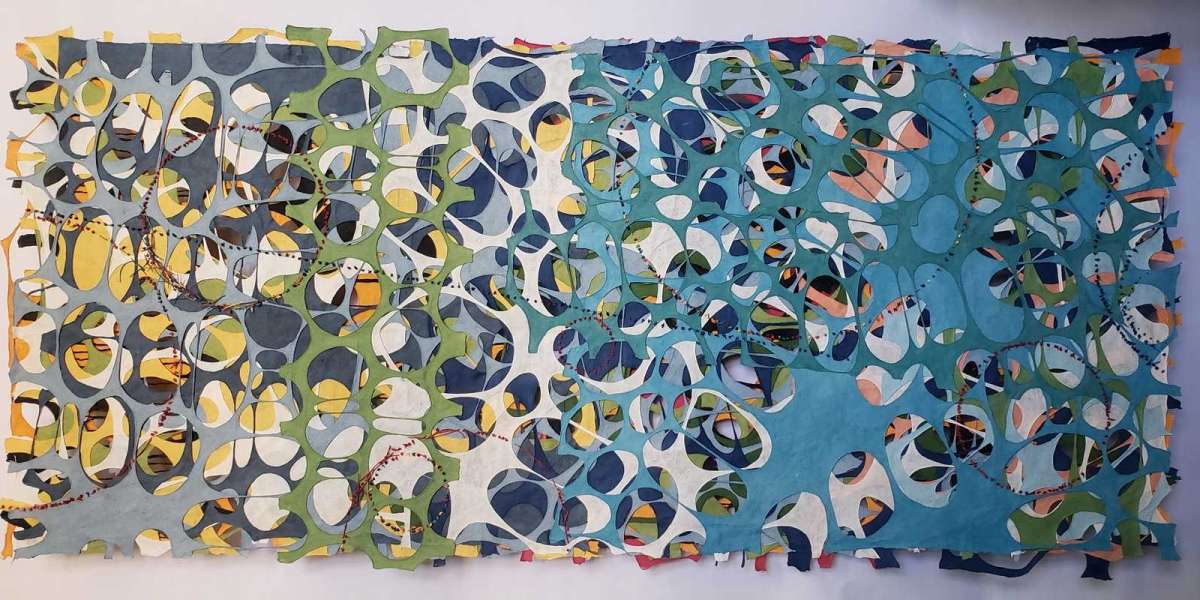Jiyoung Chung, an artist, has a stronger affinity to her chosen medium than most. Chung uses mulberry paper to make joomchi, a tough and fibrous substance. Koreans have utilised this technique to produce clothing, armour, and household items for ages. Chung recognised the technique's creative potential at a young age, even if it is no longer fashionable. She has since dedicated her career to carrying on the joomchi legacy and sharing it with the rest of the globe.
Chunghie Lee, Jiyoung Chung's mother, taught her traditional Korean craft techniques. Lee, a bojagi master, crafts wearable costumes and installation pieces out of Korean wrapping cloths. Her daughter was motivated by Lee's efforts to revive Korean fibre art. While growing up in South Korea, Jiyoung Chung was intrigued to papermaking. Chung studied painting and received her MFA in printmaking and media after moving to the United States at the age of 19.
Chung eventually tried joomchi as an artistic medium and fell in love with it. She begins by applying water on hanji (mulberry paper) to produce her masterpieces. The material is then kneaded by Chung to break and reattach the fibres. She builds up to 20 layers until she achieves a solid, smooth finish. Making joomchi takes a lot of time and patience, yet it's not boring for the artist. Chung told the American Craft Council, "I'm negotiating with the material as I do it." "I sense the agitation's harshness as life." It gets easier the more you cope with it. I'm not concerned with the paper, but rather with the creative process."
Chung layers joomchi pieces in complicated ways to create her sculptures and wall hangings. The layers of coloured paper are riddled with holes, and the artist occasionally adds stitching on top. The joomchi layers are pushed flat in some of Chung's works. In others, the artist leaves space between the objects to allow for movement and vitality.
Whisper-Romance, Chung's best-known series, uses joomchi as a healing therapy. The series was inspired by a chat with her father. Chung read a newspaper article about a son who murdered his parents, and her father speculated that the tragedy was caused by a broken relationship. In her artist statement, Chung states, "I believe we need 'human whisperers' to mend what has been shattered in our vital relationship with ourselves, nature, and God." "These discussions, the whispers, and the breath between them are represented by the gaps, layers, and free mounting of my work."
Several hanging works from the Whisper-Romance series are included in an upcoming buy-now sale hosted on the Bidsquare platform. One of the lots available is Inner Peace II (USD 6,400). This 12.5-layer piece in yellow, green, and light blue can be hung horizontally or vertically. The majority of Chung's paintings can be displayed in a variety of ways. They normally have three to thirteen layers.
In the buy-now event, smaller sculptures are also available. Seeds Voices VI, for example, is a black shadow box with numerous stacked layers of joomchi ($590). The effect is reminiscent of flower petals, sedimentary rock, or a book's uneven pages. Chung places tight balls of joomchi in a pebble-like pattern in Whisper seeds and Whisper II Seeds II ($180 each).
Chung's joomchi artworks or joomchi art are frequently available for purchase at buy-now events, such as the Smithsonian Craft Show in October 2020 and the Smithsonian Craft Optimism auction in early 2021. Many of Chung's joomchi goods are being sold for the first time at the current buy-now sale.
Joomchi was founded during the Goryeo period (918–1392). While it fell out of favour in Korea as the country became more industrialised, artists like Chung are attempting to resuscitate the method and promote it around the world. Chung organises joomchi exhibitions and delivers educational courses on a regular basis. "I feel so pleased that other people's cultures are responding to ours, and they are creating their own version of joomchi," she says of sharing her customs with new generations and organisations.
Media Source: AuctionDaily








